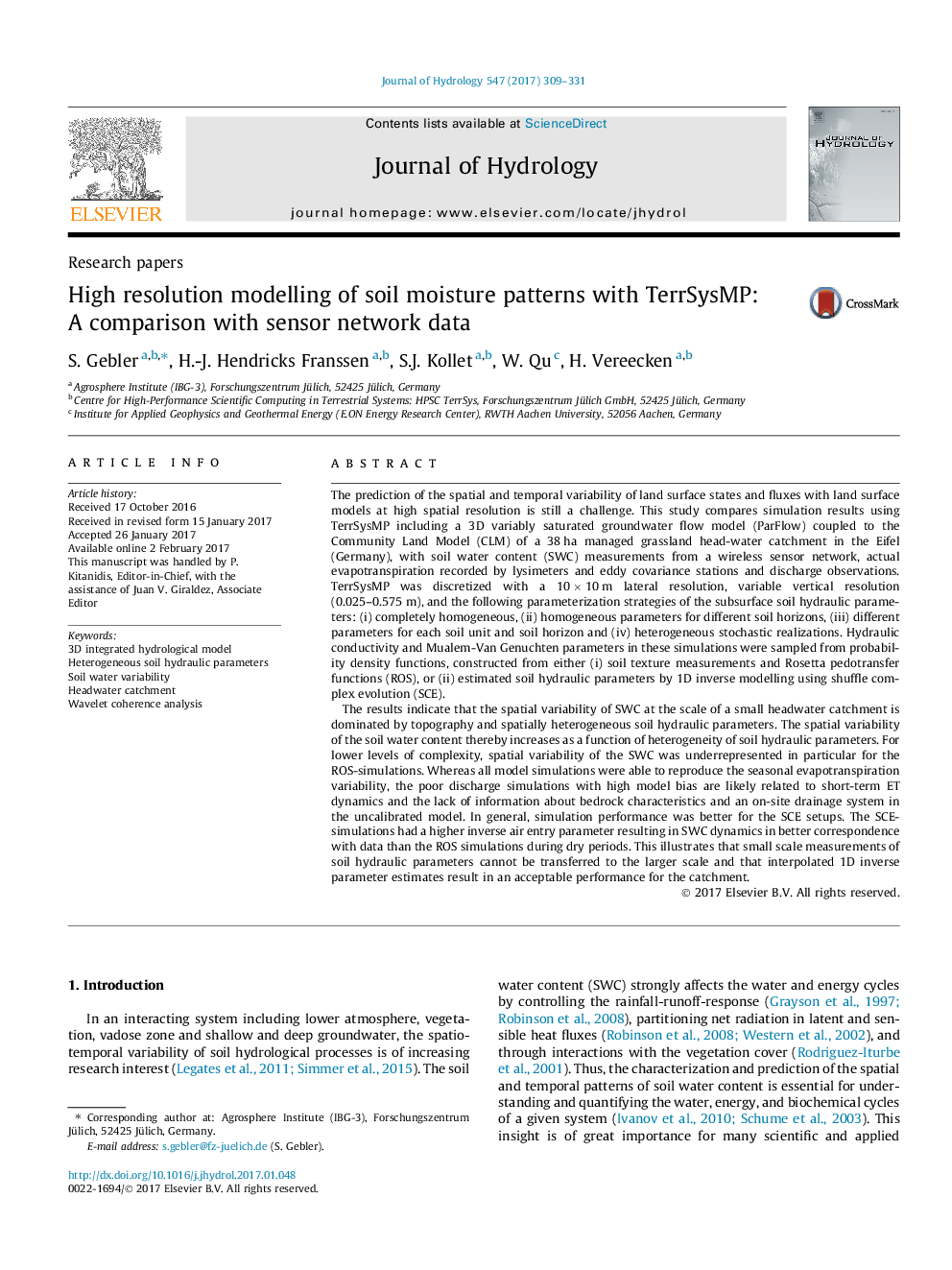| کد مقاله | کد نشریه | سال انتشار | مقاله انگلیسی | نسخه تمام متن |
|---|---|---|---|---|
| 5771048 | 1629907 | 2017 | 23 صفحه PDF | دانلود رایگان |

- Spatial variability of soil water content (SWC) is explored with integrated model.
- Spatial SWC variability can be explained â¼70% by heterogeneous subsurface.
- Topography also explains part of spatial SWC-variability.
- 1D inverse parameter estimates outperform PTF-based parameter estimates.
The prediction of the spatial and temporal variability of land surface states and fluxes with land surface models at high spatial resolution is still a challenge. This study compares simulation results using TerrSysMP including a 3D variably saturated groundwater flow model (ParFlow) coupled to the Community Land Model (CLM) of a 38Â ha managed grassland head-water catchment in the Eifel (Germany), with soil water content (SWC) measurements from a wireless sensor network, actual evapotranspiration recorded by lysimeters and eddy covariance stations and discharge observations. TerrSysMP was discretized with a 10Â ÃÂ 10Â m lateral resolution, variable vertical resolution (0.025-0.575Â m), and the following parameterization strategies of the subsurface soil hydraulic parameters: (i) completely homogeneous, (ii) homogeneous parameters for different soil horizons, (iii) different parameters for each soil unit and soil horizon and (iv) heterogeneous stochastic realizations. Hydraulic conductivity and Mualem-Van Genuchten parameters in these simulations were sampled from probability density functions, constructed from either (i) soil texture measurements and Rosetta pedotransfer functions (ROS), or (ii) estimated soil hydraulic parameters by 1D inverse modelling using shuffle complex evolution (SCE).The results indicate that the spatial variability of SWC at the scale of a small headwater catchment is dominated by topography and spatially heterogeneous soil hydraulic parameters. The spatial variability of the soil water content thereby increases as a function of heterogeneity of soil hydraulic parameters. For lower levels of complexity, spatial variability of the SWC was underrepresented in particular for the ROS-simulations. Whereas all model simulations were able to reproduce the seasonal evapotranspiration variability, the poor discharge simulations with high model bias are likely related to short-term ET dynamics and the lack of information about bedrock characteristics and an on-site drainage system in the uncalibrated model. In general, simulation performance was better for the SCE setups. The SCE-simulations had a higher inverse air entry parameter resulting in SWC dynamics in better correspondence with data than the ROS simulations during dry periods. This illustrates that small scale measurements of soil hydraulic parameters cannot be transferred to the larger scale and that interpolated 1D inverse parameter estimates result in an acceptable performance for the catchment.
Journal: Journal of Hydrology - Volume 547, April 2017, Pages 309-331